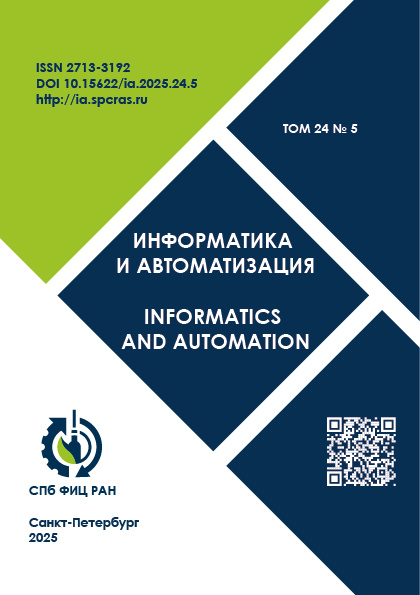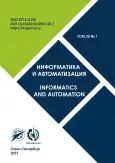Том 20, № 1 (2021)
Робототехника, автоматизация и системы управления
Устойчивость слежения за задержкой фазоманипулированных сигналов с расширением спектра в системах синхронизации радиотехнических систем
Аннотация
 16-42
16-42


Удержание геостационарного спутника в заданной точке стояния с учетом дополнительных фазовых ограничений
Аннотация
 43-67
43-67


Повышение эффективности обнаружения загоризонтными РЛС с поверхностной волны надводных объектов на основе синтеза апертуры антенной системы
Аннотация
 68-93
68-93


Искусственный интеллект, инженерия данных и знаний
Методы классификации ЭЭГ-паттернов воображаемых движений
Аннотация
 94-132
94-132


Геометрический кусочно-кубический интерполяционный многочлен Безье с непрерывностью C2
Аннотация
Кривая Безье – это параметрический полином, который применяется для получения хороших методов кусочной интерполяции с большим преимуществом перед другими кусочными полиномами. Следовательно, критически важно построить кривые Безье, которые были бы гладкими и могли бы повысить точность решений. Большинство известных стратегий определения внутренних контрольных точек для кусочных кривых Безье обеспечивают только частичную гладкость, удовлетворяющую первому порядку непрерывности. Некоторые решения позволяют строить интерполяционные полиномы с гладкостью по ширине вдоль аппроксимирующей кривой. Однако они все еще не могут обрабатывать расположение внутренних контрольных точек. Частичная гладкость и неконтролирующее расположение внутренних контрольных точек могут повлиять на точность приблизительной кривой набора данных. Чтобы улучшить гладкость и точность предыдущих стратегий, предлагается новый кусочно-кубический многочлен Безье второго порядка непрерывности C2 для оценки пропущенных значений. Предлагаемый метод использует геометрическое построение для поиска внутренних контрольных точек для каждого смежного подынтервала указанного набора данных. Не только предлагаемый метод сохраняет стабильность и гладкость, анализ ошибок численных результатов также показывает, что результирующий интерполирующий полином более точен, чем те, которые получены с помощью существующих методов.
 133-159
133-159


Цифровые информационно-коммуникационные технологии
Модели и методы выявления структуры локальной вычислительной сети при неполных данных
Аннотация
 160-180
160-180


Метод защиты авторских прав на векторные картографические данные
Аннотация
 181-212
181-212












